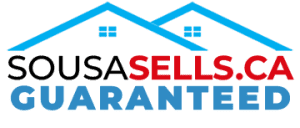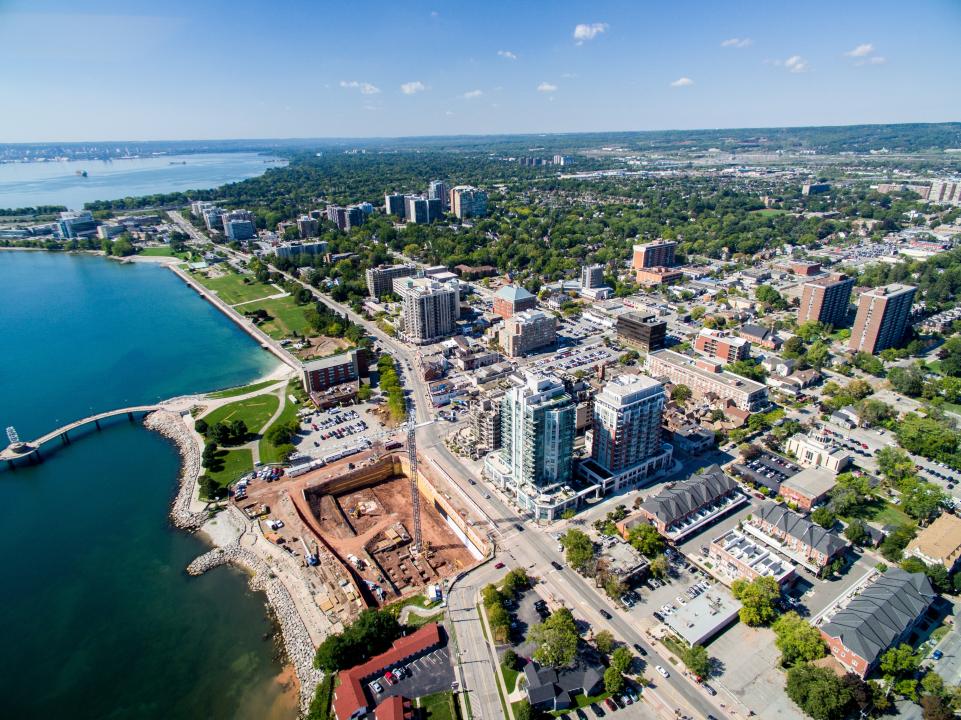The Homebuying Guide 2020 for Georgetown, Halton Hills & Rockwood
How to buy a house in 7 steps
The steps on how to buy a house are the same whether you’re buying a house, a townhouse, or condo. For simplicity, our examples will focus on how to buy a fully detached home.
Step 1: Save for a down payment
The first step towards buying a house is to save for a down payment. In Canada, you need to put down at least 5% of the home purchase price as a down payment. For homes between $500,000 and $1 million, you’ll need 5% of the first $500,000 and 10% of the rest of the price. For homes valued at $1 million or more, the minimum down payment is 20%.
You may already have a down payment saved, but if not, you can get one by saving your money every month – this can take years, however. You could also use the Home Buyer’s Plan to withdraw up to $35,000 from your RRSP, tax-free, or you could look into other sources, such as a gift from a family member.
It’s usually best to save as much as possible for your down payment because a larger down payment results in the following benefits:
Smaller mortgage default insurance premiums
More equity in your home
A lower monthly mortgage payment
Less interest paid overall
Keep in mind that when saving for a home down payment, you’ll also need to save 3% to 5% of the home’s purchase price for closing costs. For example, using the $500,000 home above, you’ll need to save an additional $15,000 – $25,000 to pay the closing costs when buying a house, on top of your down payment. Here’s a list of common closing costs you’ll pay:
Land transfer tax: $12,950
Lawyer fees: $1,000
Title insurance: $500
Home inspection: $500
Step 2: Get Organized
While you’re saving for your home down payment, take the time to get your finances and paperwork organized. You may be looking at months of dutifully saving for your down payment, which will give you time to:
Pay down your debt
If you have any credit debt, student loan debt, car loans, or a line of credit with a balance, now is a great time to pay those off. Lowering your debt levels will have a positive impact on your credit score. It will also positively impact your debt service ratios, which are formulas your lender will use to determine how much to lend you. The less debt you have, the more you can comfortably borrow for your mortgage.
Prepare your documentation
Applying for a mortgage requires a lot of paperwork, and now is the best time to prepare it. That way, when you apply for a mortgage, everything you need is right at your fingertips. Prepping your documentation in advance is particularly useful if you find your dream house and need to move quickly through the mortgage approval process. Here’s your buying a house checklist for all of the documentation you’ll need:
Current employment information such as a T4, pay stub, or letter from employer
Other sources of income like investments or business income
Savings and investment statements for the past 90 days
If you are planning to use the Home Buyer’s Plan, proof of withdrawal from your RRSP
If you are using a financial gift from a family member, you’ll need a letter stating the gift is not a loan
A void cheque
An inventory of all other debts and assets like cars and car loans
Want a better mortgage rate?
Compare the best mortgage rates available
Step 3: Check for rebates and grants
Buying a home is expensive, so make sure you aren’t making the process more costly than it needs to be. Take the time to check whether you’re eligible for any rebates or grants. Here are some common programs available to first-time homebuyers:
Home Buyer’s Plan: Withdraw up to $35,000 from your RRSP for a home down payment, tax-free
Toronto’s land transfer tax rebate: If you are buying a house in Ontario you may receive a partial refund of Toronto’s land transfer tax up to $4,475
Home Buyer’s Amount: a non-refundable $5,000 income tax credit
GST/HST New Housing Rebate: a partial rebate on the GST or HST you paid on the cost of your new home
Read more about Canadian programs for first-time homebuyers.
Step 4: Shop around for a great rate
You wouldn’t buy car insurance without shopping around for the best price, so why should your mortgage be any different? Finding the lowest mortgage rate could save you thousands – or ten’s of thousands – in interest over the life of your mortgage. Fortunately, shopping around for the best mortgage rate is easy when you use a mortgage broker.
A mortgage broker will have you fill out one application, then shop it around to several different lenders, returning with only the best offer and the lowest rate for you. Still not convinced? Here’s the difference between securing today’s lowest mortgage rate versus the standard posted rates at big banks on a $500,000 home.
Even if a mortgage broker can’t find you a better rate, they’ll still be able to offer you expert, personalized advice at no cost. Find a mortgage broker near you here.
Step 5: Get a mortgage pre-approval
If you’ve saved your down payment, organized your documentation, and found a mortgage broker, now is the time to get pre-approved for a mortgage. Mortgage pre-approval is free and doesn’t commit you to a single lender, but it does give you a chance to find out the following information to inform your house hunt:
How much you can afford to spend on a house
How much your maximum monthly mortgage payment could be
What mortgage interest rate is available to you
A mortgage pre-approval is a low-risk way to find out these critical pieces of information, which will help you determine your maximum purchase price. If you like the mortgage rate and lender, you can lock in that rate for up to 160 days. Locking in the mortgage rate means that if rates rise, you’ll still access the lower rate. If rates drop, don’t worry, your lender will honour the lower rate.
Getting a pre-approval can be a little daunting if you’ve never done it before, so check out this list of dos and don’ts for pre-approvals before you jump.
Step 6: Find a home
Finally, the fun part – house hunting! With your mortgage pre-approval in hand, your maximum purchase price in mind, and a substantial down payment, you’re ready to contact a real estate agent and begin your house hunt. Here are our top tips:
Find a real estate agent that specializes in the type of house or neighbourhood you prefer (family referrals are a great place to start)
Avoid representing yourself if you are a first-time homebuyer. It’s better to rely on the expertise of an experienced agent
Make a list of “must-have” and “nice-to-have” features for your future house. It’s important to know where you can be flexible
Research the market in your ideal neighbourhood to make sure home prices and your maximum purchase price are in sync
Be prepared to move quickly in a competitive market
You can use a site like Zoocasa to do a lot of this research without having to leave the house.
Want a better mortgage rate?
Compare the best mortgage rates available
Step 7: Make an offer and seal the deal
When you find the house you want, things will move fast – but don’t panic! First, you’ll submit an offer to purchase. If your housing market is hot, you may not be the only buyer to submit an offer. Once your offer is accepted, you’ll pay a deposit to the buyer (which is applied against the purchase price of the home), arrange to finalize your mortgage financing through your mortgage broker, and arrange for a home inspection.
The offer might be amended based on the findings of the home inspection. Still, eventually, you’ll secure your financing and, with the help of a real estate lawyer, pay your down payment and transfer title to the home into your name. The entire process can take 30-60 days, depending on the terms of the offer to purchase.
Once everything is in place, you’ll receive the keys from your real estate agent, and you’ll officially be the owner of your new home.
The Bottom Line
While this article may seem exhaustive, it only scratches the surface of how to buy a home in Canada. Fortunately, there is no shortage of real estate experts, from mortgage brokers to real estate agents, who are available to answer all of your questions about how to buy a house in Canada. Just make sure to prepare well in advance, save a large down payment, and ensure your financial house is in order before you take the plunge.

